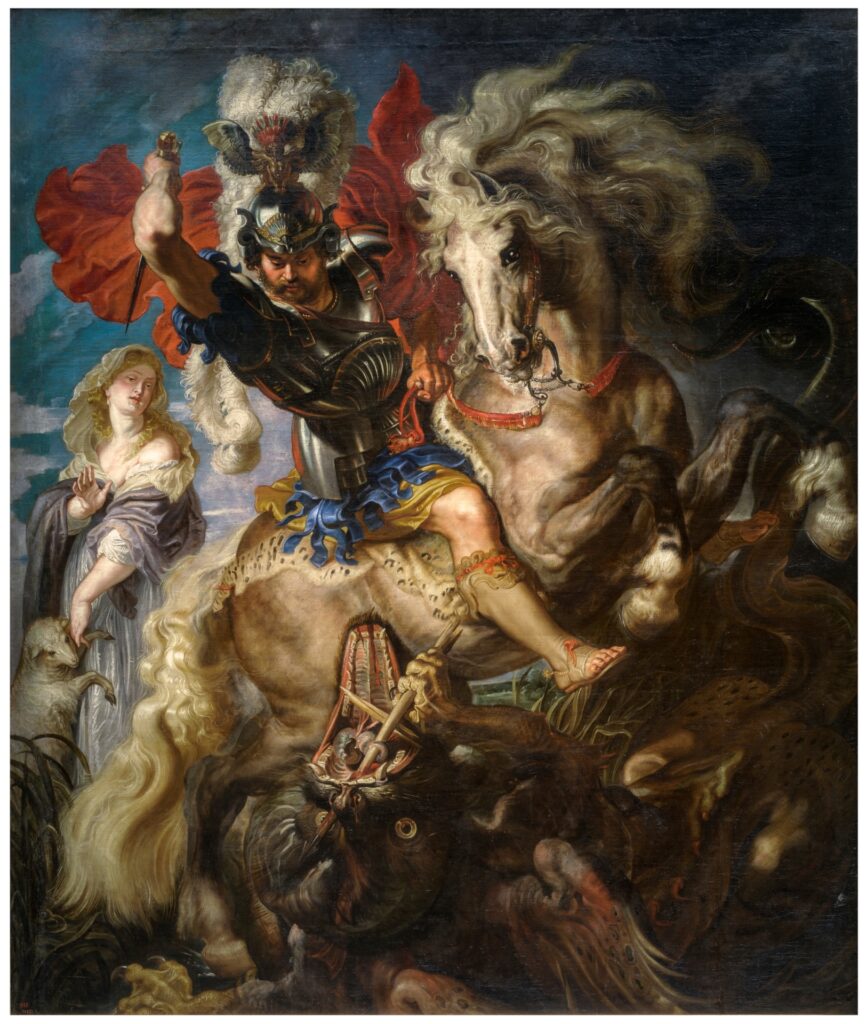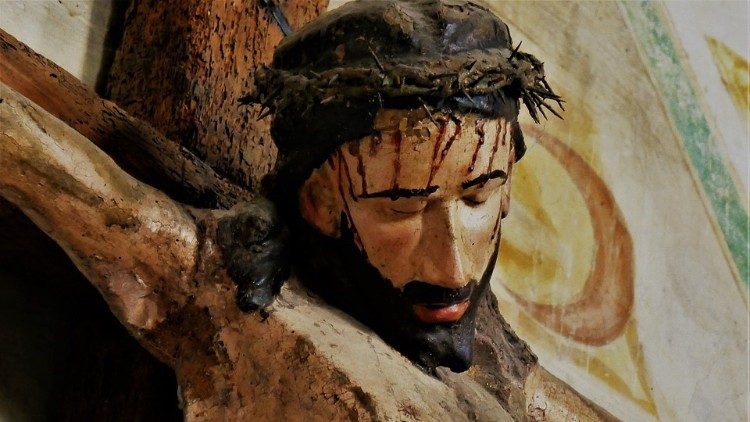Saint George, April 23
Martyr

About the figure of Saint George, there are endless stories, and fanciful narratives such as the episode when he saved the princess from the clutches of the dragon, which occurred during the period of the Crusades. It is said that in the city of Selem in Libya, there was a large pond where a terrible dragon lived. To calm it down, the inhabitants of the city offered it two sheep a day and then a sheep and a young man chosen at random. One day it fell to the Kingston daughter, and while the young woman was heading towards the pond, a man named George passed by and killed the dragon by stabbing it with his spear. This gesture became the symbol of faith that triumphs over evil.
Who was Saint George?
George, whose name has Greek origin meaning “farmer,” was born into a Christian family in Cappadocia around 280. He moved to Palestine and joined Diocletian’s army. In 303, when the emperor issued the edict of persecution against Christians, George donated all of his property to the poor and, before Diocletian himself, he tore up the document and professed his faith in Christ. For this action, he suffered terrible torture and was ultimately beheaded. On the place where he was buried in Lidda, which was formerly the capital of Palestine and today is an Israeli city near Tel Aviv, a basilica was erected shortly after his death where his mortal remains can still be seen today he. This is the Passio Georgii, considered one of the hagiographic works of the Gelasianum Decree of 496 and defined, therefore, as a legendary passio. Among the oldest documents that verify the existence of Saint George, is a Greek epigraph from 368 found in Eraclea of Bethany where it speaks of the “house or church of George and his companions, triumphant saints and martyrs.”
From martyr to warrior saint
The warriors were very influential in transforming the figure of Saint George the martyr into a holy warrior, symbolizing the dragon scene as the defeat of Islam; Richard the Lionheart invoked him as protector of all combatants. With the Normans, his cult was strongly established in England, where in 1348, King Edward III established the Order of the Knights of Saint George. Throughout the medieval period, his figure was the object of epic literature.
Devotion to Saint George
Saint George is considered the patron saint of knights, soldiers, scouts, fencers, and archers, he is also invoked against plague and leprosy and against poisonous snakes. Saint George is also honored by Muslims, who gave him the name “prophet.” Due to a lack of certain news about his life, in 1969, the Church demoted the liturgical feast of Saint George to optional memory, without touching the cult dedicated to him. The relics of the saint are found in various places around the world: in Rome, in the church of Saint George in the Velabro, by the will of Pope Zacharias, he guards the skull.
Saint George is also a saint who is accompanied by legend, one could conclude that his historical function is to remind the world of the fundamental idea, that good always conquers evil. The fight against evil is an ever-present dimension in human history, but this battle is not won alone; Saint George kills the dragon because it is God who acts in him. With Christ, evil will never have the last word.
Related

“The priest finds his reason for being in the Eucharist”
Fundación CARF
01 April, 2025
5 min

Family Valued: An international appeal for the family
Exaudi Staff
01 April, 2025
2 min

Bishop Luis Argüello Addresses the Challenges of the Church in Spain
Exaudi Staff
01 April, 2025
2 min

THE WAY OF THE CROSS: Accompanying Jesus on the way to the Cross
Luis Herrera Campo
31 March, 2025
5 min
 (EN)
(EN)
 (ES)
(ES)
 (IT)
(IT)

